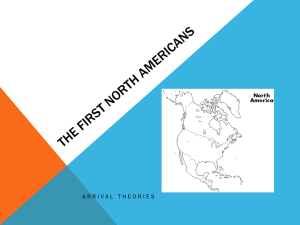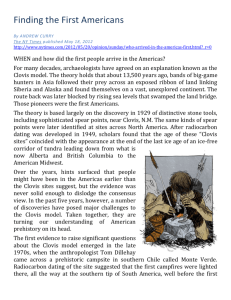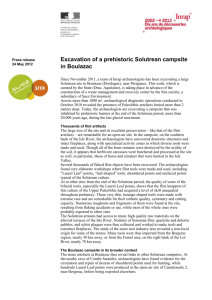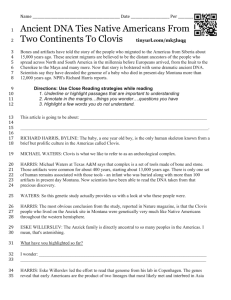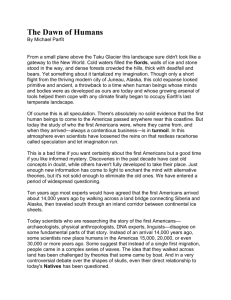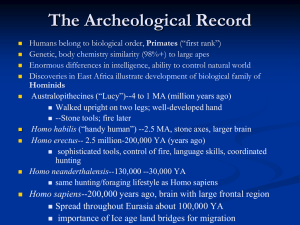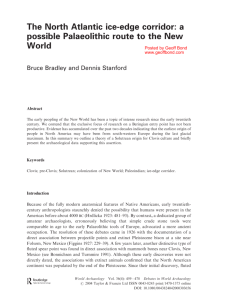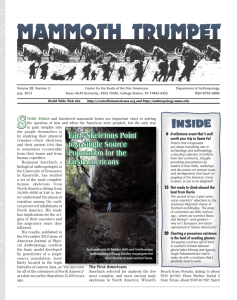The Solutrean Solution--Did Some Ancient Americans Come from
advertisement
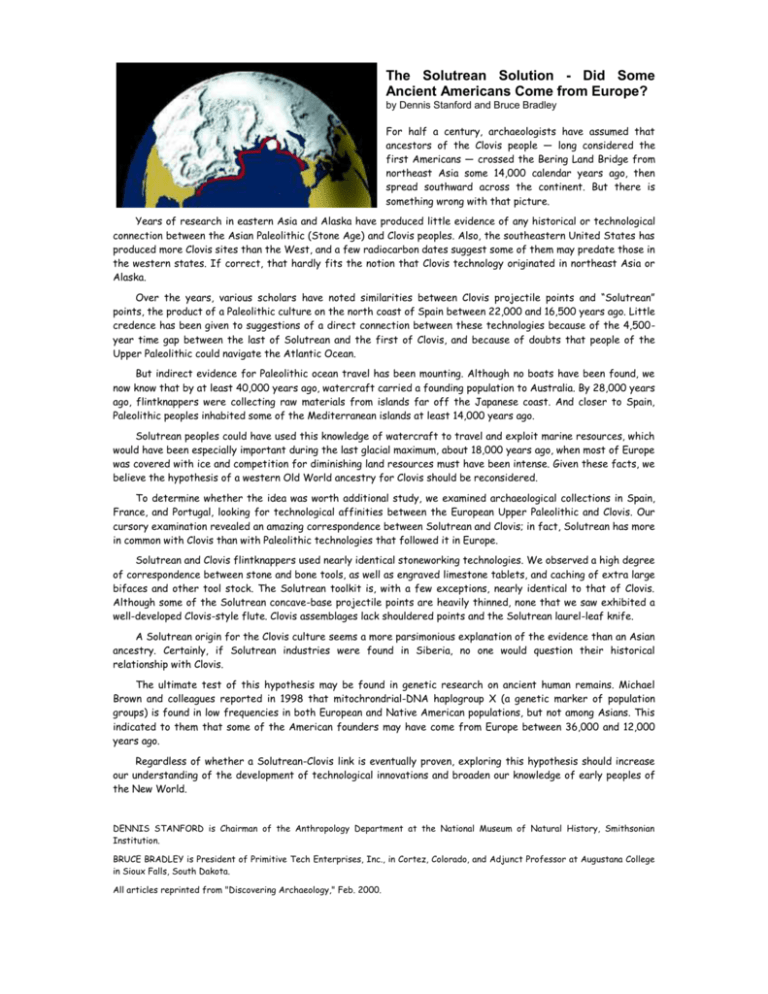
The Solutrean Solution - Did Some Ancient Americans Come from Europe? by Dennis Stanford and Bruce Bradley For half a century, archaeologists have assumed that ancestors of the Clovis people — long considered the first Americans — crossed the Bering Land Bridge from northeast Asia some 14,000 calendar years ago, then spread southward across the continent. But there is something wrong with that picture. Years of research in eastern Asia and Alaska have produced little evidence of any historical or technological connection between the Asian Paleolithic (Stone Age) and Clovis peoples. Also, the southeastern United States has produced more Clovis sites than the West, and a few radiocarbon dates suggest some of them may predate those in the western states. If correct, that hardly fits the notion that Clovis technology originated in northeast Asia or Alaska. Over the years, various scholars have noted similarities between Clovis projectile points and “Solutrean” points, the product of a Paleolithic culture on the north coast of Spain between 22,000 and 16,500 years ago. Little credence has been given to suggestions of a direct connection between these technologies because of the 4,500year time gap between the last of Solutrean and the first of Clovis, and because of doubts that people of the Upper Paleolithic could navigate the Atlantic Ocean. But indirect evidence for Paleolithic ocean travel has been mounting. Although no boats have been found, we now know that by at least 40,000 years ago, watercraft carried a founding population to Australia. By 28,000 years ago, flintknappers were collecting raw materials from islands far off the Japanese coast. And closer to Spain, Paleolithic peoples inhabited some of the Mediterranean islands at least 14,000 years ago. Solutrean peoples could have used this knowledge of watercraft to travel and exploit marine resources, which would have been especially important during the last glacial maximum, about 18,000 years ago, when most of Europe was covered with ice and competition for diminishing land resources must have been intense. Given these facts, we believe the hypothesis of a western Old World ancestry for Clovis should be reconsidered. To determine whether the idea was worth additional study, we examined archaeological collections in Spain, France, and Portugal, looking for technological affinities between the European Upper Paleolithic and Clovis. Our cursory examination revealed an amazing correspondence between Solutrean and Clovis; in fact, Solutrean has more in common with Clovis than with Paleolithic technologies that followed it in Europe. Solutrean and Clovis flintknappers used nearly identical stoneworking technologies. We observed a high degree of correspondence between stone and bone tools, as well as engraved limestone tablets, and caching of extra large bifaces and other tool stock. The Solutrean toolkit is, with a few exceptions, nearly identical to that of Clovis. Although some of the Solutrean concave-base projectile points are heavily thinned, none that we saw exhibited a well-developed Clovis-style flute. Clovis assemblages lack shouldered points and the Solutrean laurel-leaf knife. A Solutrean origin for the Clovis culture seems a more parsimonious explanation of the evidence than an Asian ancestry. Certainly, if Solutrean industries were found in Siberia, no one would question their historical relationship with Clovis. The ultimate test of this hypothesis may be found in genetic research on ancient human remains. Michael Brown and colleagues reported in 1998 that mitochrondrial-DNA haplogroup X (a genetic marker of population groups) is found in low frequencies in both European and Native American populations, but not among Asians. This indicated to them that some of the American founders may have come from Europe between 36,000 and 12,000 years ago. Regardless of whether a Solutrean-Clovis link is eventually proven, exploring this hypothesis should increase our understanding of the development of technological innovations and broaden our knowledge of early peoples of the New World. DENNIS STANFORD is Chairman of the Anthropology Department at the National Museum of Natural History, Smithsonian Institution. BRUCE BRADLEY is President of Primitive Tech Enterprises, Inc., in Cortez, Colorado, and Adjunct Professor at Augustana College in Sioux Falls, South Dakota. All articles reprinted from "Discovering Archaeology," Feb. 2000.

